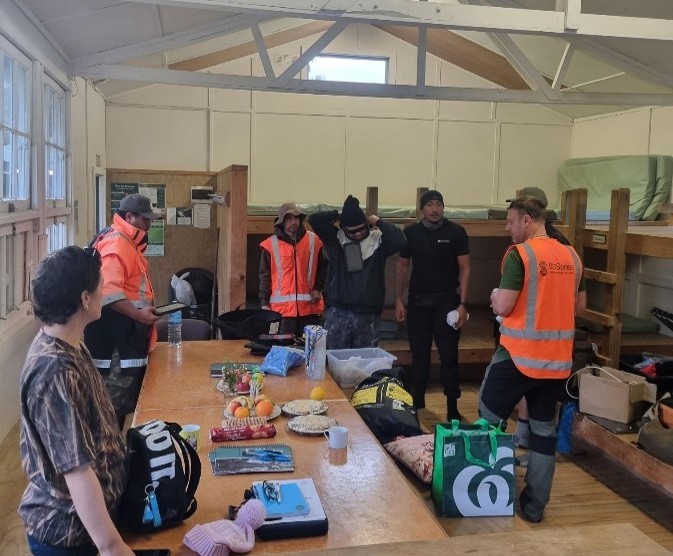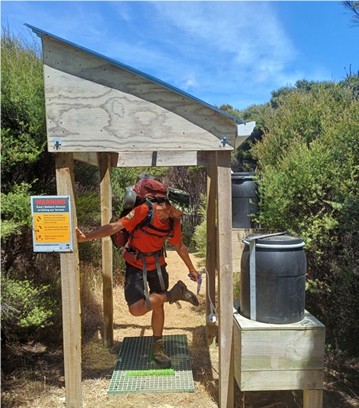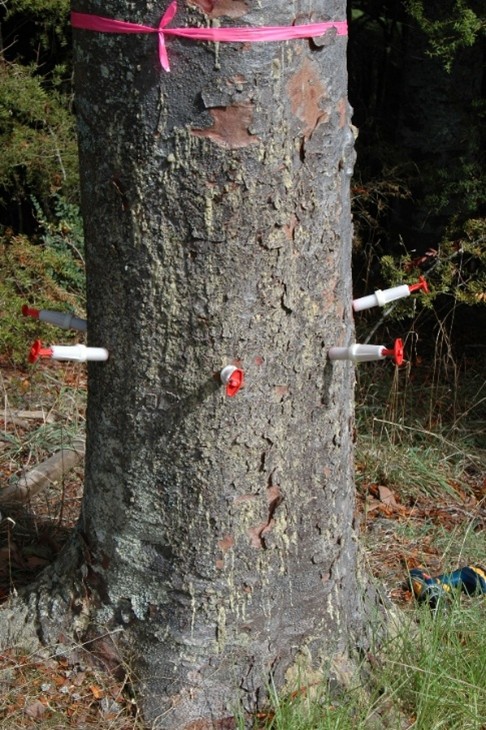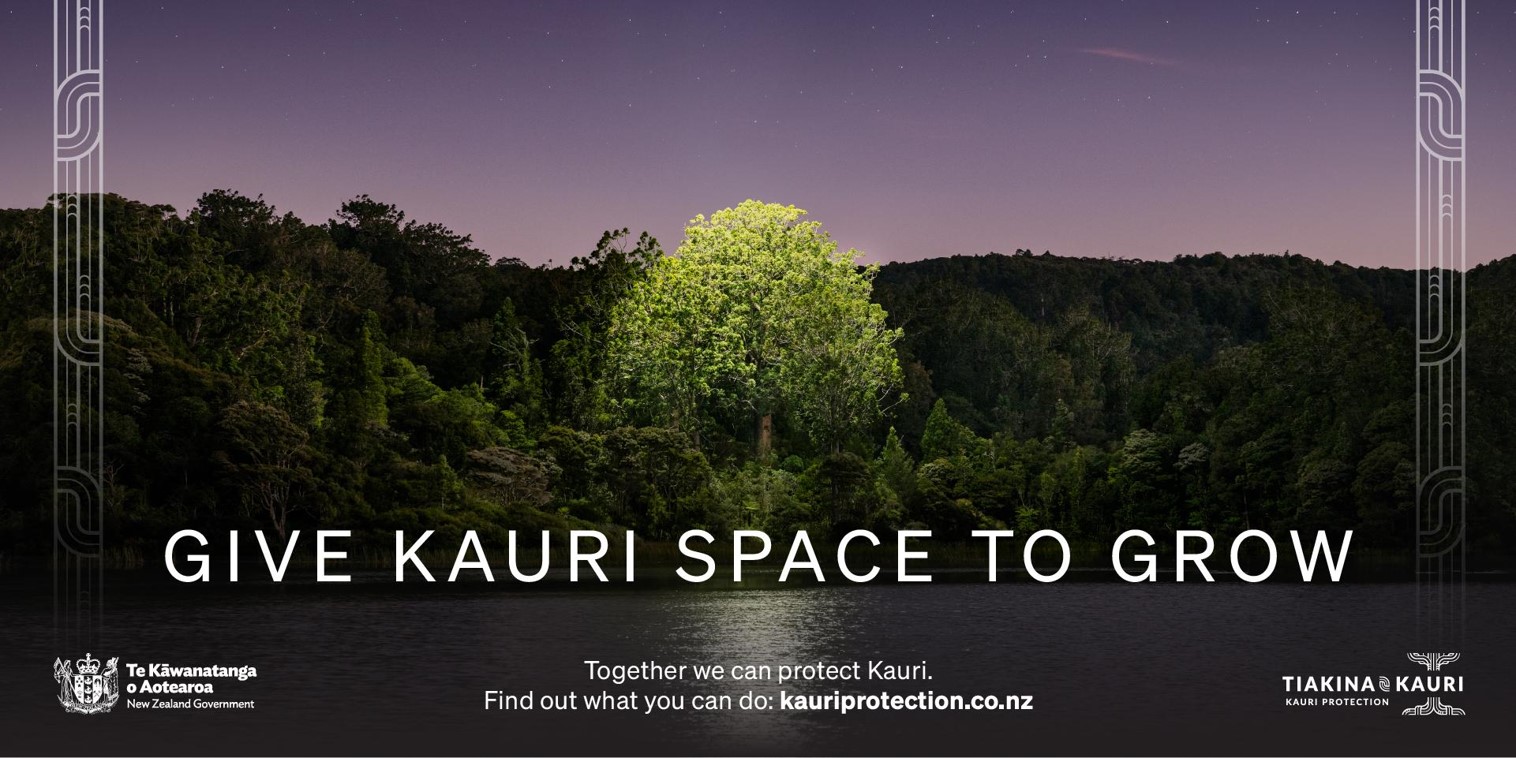Kauri Kōrero - August 2025
Kia ora koutou,
We are excited to welcome you back to our first Kauri Kōrero pānui (newsletter) for a while!
There have been some amazing milestones reached across Kauri protection over the years, and this pānui is an opportunity to share these stories and wins as a reminder and a celebration of what we have achieved together.
Just as the diversity of the forest makes it strong, the diversity among the Kauri protection community ensures the continued safety of these special trees.
It is more important than ever that we continue to work together to protect these rākau rangatira (chiefly trees) as this financial year marks the final year of the 5 years of National Pest Management Plan funding. Beyond June 2026, Tiakina Kauri will be focussed on the development and sharing of tools and resources to support groups in their Kauri protection mahi.
In July, we came together with a range of technical and operational people from the Kauri protection community at Arataki Visitor Centre in the Waitākere Ranges. This was an opportunity to gather our collective insights and expertise which will feed into the development of the next tools in our shared kete, including the Forest Managers Guide which will aid people in their decision making around protecting Kauri. We are also working closely with LINZ and mana whenua to develop the Survey Portal Tool which will give surveillance groups an accessible and cost-effective way to design surveillance plans, gather and understand surveillance data and create reports on this data. We will share more on this tool once it has been finished.
We are also hosting two regional hui in September which will be an opportunity for groups to come together and share about their Kauri protection mahi.
We hope you enjoy reading this issue. Please share this pānui and encourage others to subscribe. If you have any Kauri protection stories you’d like to share here, please email kauriprotection@mpi.govt.nz.
Ngā mihi,
Alan McKenzie, Manager Tiakina Kauri Management Agency

Surveillance training
Kauri are threatened by a soil-borne pathogen called Phytophthora agathidicida (PA). An essential part of protecting Kauri from PA is understanding both where the pathogen is and isn’t. Over time this picture has become clearer with monitoring, surveillance and on the ground sampling of soil.
However, this sampling comes with a risk of spreading PA due to the mahi (work) requiring walking through the ngahere (forest) and around Kauri trees. Therefore, it is vital that groups are trained – not only in best practice hygiene to avoid spreading PA but also in how to take a soil sample and how to identify a Kauri tree in the ngahere. Having a consistent standard and approach strengthens Kauri protection work, helping to keep these special trees safe.
In June, a cohort from Ngāti Rehia, Ngāpuhi and Papa Hapū were the latest to undertake this training provided by Tiakina Kauri and BioSense at Puketi Forest in Northland. Participants spent a day in the classroom learning about Kauri, PA and the National Pest Management Plan and a day in the field, learning how to sample for PA.
Leayers Heihei (Ngatikahu ki whangaroa) reflected that “it was a valuable experience that deepened our understanding of PA and the importance of protecting these taonga species. The hands-on training provided practical skills in identifying symptoms, collecting soil samples, and in following strict hygiene protocols. It also reinforced the importance of tikanga and working in partnership with mana whenua to safeguard the health of our forests for future generations.”
Mikey Cook (Ngāpuhi) shared; “Very grateful that Tiakina Kauri was able to provide this opportunity for us to learn and understand the importance of the mahi that must be carried out, along with the correct tools and knowledge to execute well thought out plans to sustain our surrounding ngahere for future generations.
There are so many [benefits] but one that speaks out to me the most is the well thought out planning and tying in that special connection with the surrounding fauna within the ngahere.”

Northland Regional Council promoting better biosecurity behaviour
Northland Regional Council has been encouraging visitors and locals to follow hygiene protocols when visiting Kauri forests. This comes off the back of people failing to follow simple biosecurity protocols after a 400-metre section of track was upgraded at Tuariki Road, Bream Tail - another milestone in a five-year effort supported primarily by the Tiakina Kauri programme.
Councillor Jack Craw shared, “We’re fortunate to have strong support from the wider council and MPI, but we need everyone to play their part.”
“Kauri is integral to our national identity, particularly here in Northland, and it’s up to us to ensure its survival.”
You can read the whole story on their website.

Kauri Rescue
Another win across the years of Kauri protection has been the understanding gathered around the use of phosphite to slow the impact of PA on Kauri trees, especially the understanding of dose rates. Phosphite is used by injecting it into the tree and is very effective at both suppressing PA and stimulating the natural defences of the Kauri including the healing of bark. While it won’t cure the tree, these injections not only slow the spread of PA in the individual tree, but also reduce the amount of PA in the soil around the treated trees, meaning it is less likely to be spread.
Kauri Rescue Trust has been using phosphite and working to treat and monitor thousands of Kauri trees. This not-for-profit group formed in 2016 as a citizen science project working with private landowners and became a private trust in December 2020. Following initial funding from the Biological Heritage National Science Challenge and subsequent support from Tiakina Kauri, Kauri Rescue is currently funded by grants from Auckland Council, Watercare, Foundation North and the NZ Lottery Grants Board.
If PA is detected via soil samples on landowners’ property, they can be supported by Kauri Rescue to carry out a phosphite treatment programme, including being supplied all equipment, training and support to do the work. Landowners are also provided with information on general Kauri care and hygiene. For more information go to: www.kaurirescue.org.nz
Although the treatment effect is not permanent, one advantage of phosphite is that a single treatment can be effective for many years, with probably at least 3-5 years before retreatment is necessary.

Can you pronounce Phytophthora agathidicida?
If a picture is worth a thousand words, a video is worth its emotional weight in gold. A prime example of this is the pair of videos from a recent outreach initiative led by Bioprotection Aotearoa. Created by Max Tiweka from Maxwell Productions, these videos capture students of Te Kura Kaupapa Māori o Wairarapa as they share what they have learned - like how to pronounce Phytophthora agathidicida - through their journey across their local Wairarapa wetlands and the further-afield ngahere of Aotea.
These videos are available to watch on YouTube in either Te reo Māori or Bilingual – (English and te reo Māori).
More Information about the outreach programme can be found here: bioprotection.org.nz/research/follow-this-kura-exploring-biosecurity-and-forest-health/
Make Kauri Protection Second Nature
Making Kauri protection second nature was the ask of our recent autumn behaviour campaign, which builds on the 2022 messaging ‘Give Kauri Space to Grow’.
We wanted to shift from raising general awareness among broad audiences to increasing awareness and understanding of the National Pest Management Plan’s (NPMP) rules, along with best-practice behaviours.
The high-risk users targeted with bespoke advertising included forest users such as walkers, mountain bikers, hunters and pest control operators, as well as nurseries, landowners and industries such as forestry and mining.
It was great to see partners use the campaign assets through their own channels.
Key guides include:
Check them all out at www.kauriprotection.co.nz/resources
Keep an eye on the website and social media for information when new resources are published.
Kauri Community
As we work together to protect Kauri, we are also protecting the species that call them home. Over their full life of 500–2,000 years, these trees become a kāinga (home) and a habitat to a variety of special animals, plants and fungi. We look forward to featuring these species over the coming newsletters.
– Te Kawa Robb
Kākā
Often mistaken for their southern cousin, the kea, kākā are a large, olive-green bush parrot that are found across Aotearoa New Zealand. These manu (birds) are threatened and suffering from both habitat loss and competition and predation from introduced species.
Kauri provide both habitat and kai (food) for kākā. These manu use their strong beaks to open Kauri cones to eat the seeds and also for pulling bark off tree trunks to find insects living underneath. Kākā fill a similar niche (role) to woodpeckers in Aotearoa New Zealand in this way.
These manu are also important for pollinating and spreading seeds of some of our other native plant species which live among Kauri.
